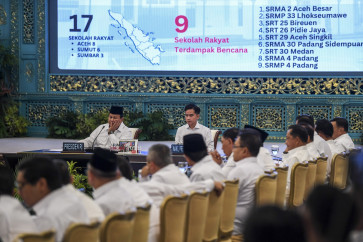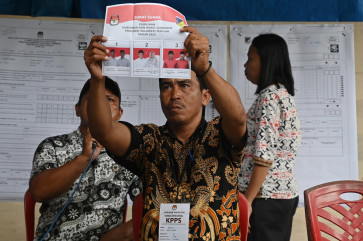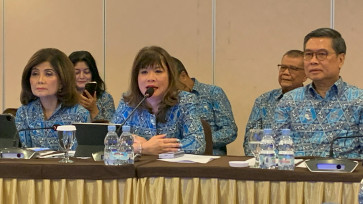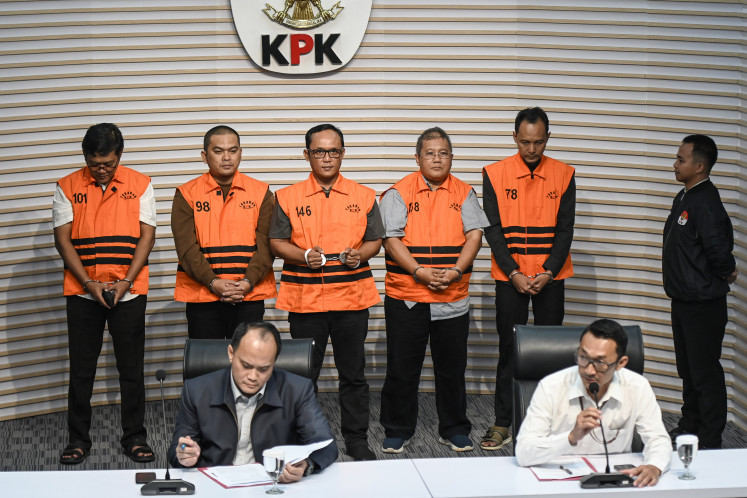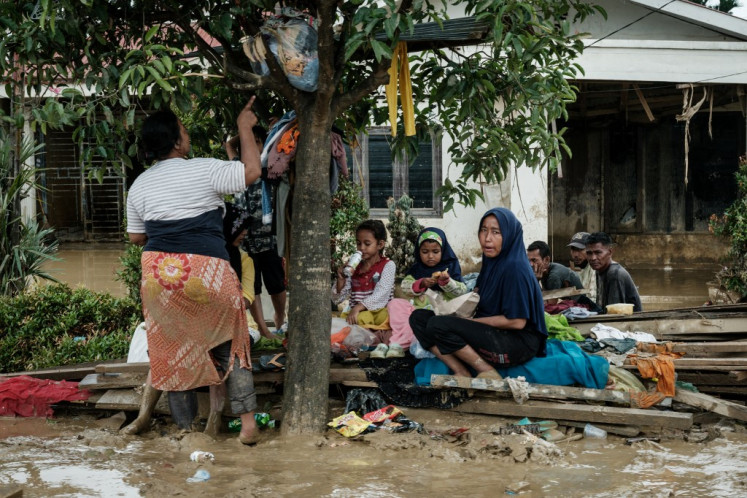Popular Reads
Top Results
Can't find what you're looking for?
View all search resultsPopular Reads
Top Results
Can't find what you're looking for?
View all search resultsDevelopment finance must shift away from aid
Better ways of financing development are becoming more available.
Change text size
Gift Premium Articles
to Anyone
 A Burundian government official from the Office for the Protection of Refugees speaks with newly arrived Congolese refugees awaiting relocation while weighing a sack of rice from the final batches delivered by the now-dismantled United States Agency for International Development (USAID) following a food distribution at the Cishemere Transit Center near Buganda, on May 6, 2025. (AFP/Luis Tato)
A Burundian government official from the Office for the Protection of Refugees speaks with newly arrived Congolese refugees awaiting relocation while weighing a sack of rice from the final batches delivered by the now-dismantled United States Agency for International Development (USAID) following a food distribution at the Cishemere Transit Center near Buganda, on May 6, 2025. (AFP/Luis Tato)
T
raditional donors have sharply scaled back their aid commitments to developing countries over the past year. Some, like the United States, have virtually eliminated their aid programs. According to the Organisation for Economic Co-operation and Development (OECD), official development assistance (ODA) from member countries declined by 7.1 percent in 2024, its first annual drop in six years.
This trend has not been limited to a few major donors. Of the 33 members of the OECD’s Development Assistance Committee (DAC), 22 slashed their aid budgets, and only four countries met the United Nations’ target of allocating 0.7 percent of gross national income to ODA.
The outlook for the coming year offers little hope for improvement, as major DAC donors have announced additional cuts. Most notably, US President Donald Trump’s administration has suspended most foreign aid and dismantled the US Agency for International Development (USAID), which dispersed most US government aid dollars.
Meanwhile, the United Kingdom plans to reduce aid spending from 0.5 percent of GNI to 0.3 percent by 2027. Similar retrenchment across Europe and North America is reshaping international assistance, disrupting humanitarian and climate-related programs, and creating financing gaps in critical sectors such as health, education and clean energy.
In our 2017 book Going Beyond Aid, we urged developing-country governments to reduce their dependence on foreign aid, not only because it was becoming an unreliable source of funding, but also because other, better ways of financing development were becoming more available. That message is more urgent than ever.
As reliance on aid becomes untenable, the international community must mobilize a broader array of financing sources to advance green and sustainable growth. This includes national development banks, industrial investment funds, sovereign wealth funds and institutional investment in public markets, as well as innovative mechanisms such as debt swaps and public-private partnerships (PPPs). These tools can unlock domestic resources, attract long-term investors, and create synergies between public goals and private capital.
Equity investment offers a promising avenue for engaging nontraditional development partners while reducing developing countries’ dependence on debt. Government investment funds, public and private financial institutions and other private actors can participate by taking equity stakes in public enterprises, financing infrastructure projects or joining PPPs. Such participation not only alleviates debt burdens but also improves the performance and management of public assets.


